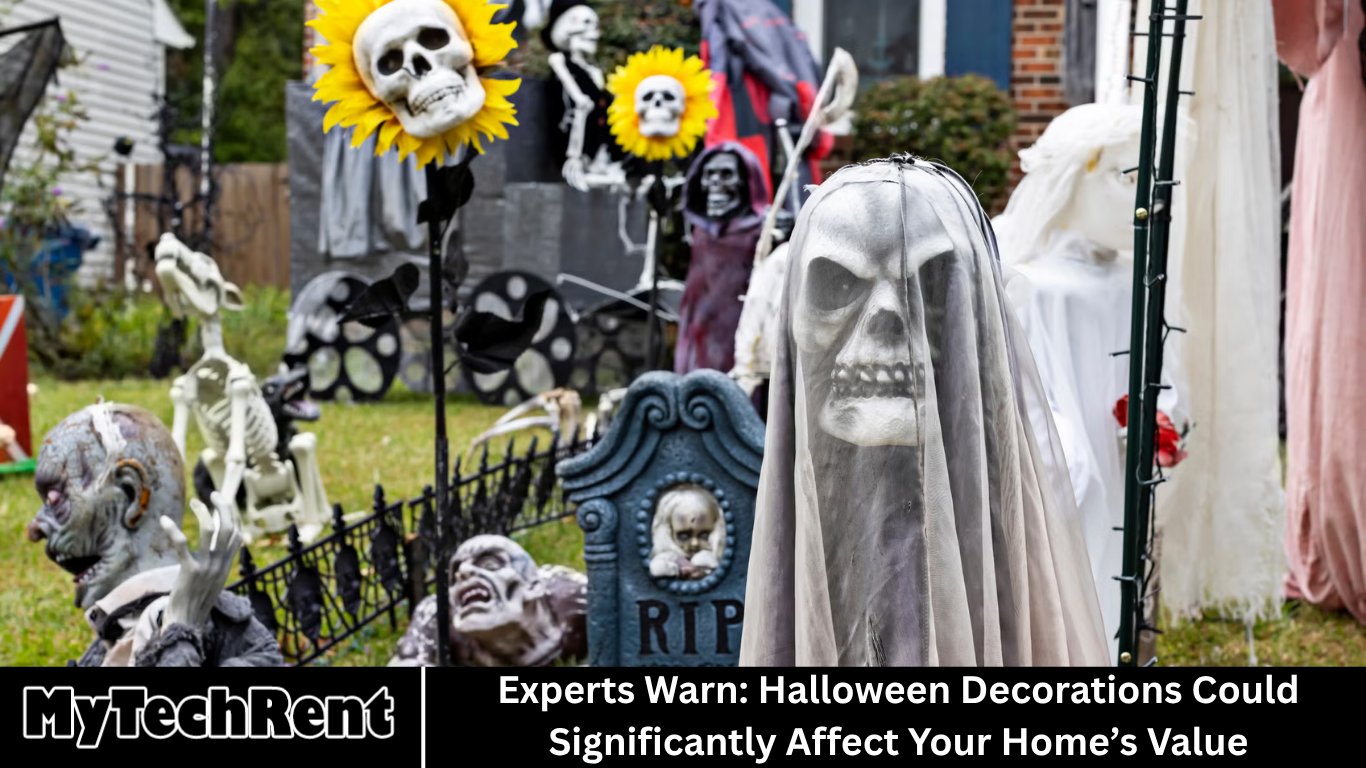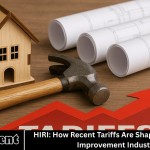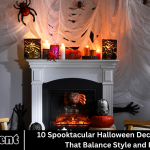Halloween is a season of fun, creativity, and celebration. Pumpkins carved into jack-o’-lanterns, spider webs stretched across doorways, and ghostly inflatables in the yard create a festive atmosphere that children and adults alike enjoy.
- The Psychology Behind Halloween Decorations and Home Value
- How Halloween Decorations Can Boost Home Appeal
- Enhancing Curb Appeal
- Showcasing Community Engagement
- Highlighting Outdoor Spaces
- Creating Emotional Connection
- When Halloween Decorations Hurt Your Home’s Value
- Over-the-Top or Distracting Displays
- Narrowing Appeal
- Safety and Liability Concerns
- Maintenance and Removal Worries
- Inappropriate Timing in Listings
- Best Practices for Homeowners
- Market Insight
- Case Examples
- Frequently Asked Question
- Can Halloween decorations increase my home’s sale price?
- What types of decorations should be avoided?
- How do I stage my home for Halloween without hurting its appeal?
- Can decorations create safety concerns that affect home value?
- Should listing photos show Halloween décor?
- How do decorations influence curb appeal?
- Can autumn décor beyond Halloween help maintain home value?
- Conclusion
However, while homeowners often think about Halloween decorations in terms of aesthetics and entertainment, experts warn that these same decorations can have a significant impact on a home’s market value.
Whether you are planning to sell your house soon or simply want to maintain its long-term value, the way you decorate for Halloween can play a more important role than you might expect. Decorating for the holidays is a longstanding tradition in many communities.
More Read: UAE Non-Oil Private Sector Rebounds in September, PMI Reveals
The Psychology Behind Halloween Decorations and Home Value
The impact of Halloween décor on home value is rooted largely in human psychology. When potential buyers visit a property, first impressions matter. Buyers form subconscious opinions about a home within seconds of stepping onto the property.
Decorations can either reinforce positive emotions or create distractions that negatively influence perception.
- Positive influence: Tasteful, well-placed decorations can evoke feelings of warmth, comfort, and community. For example, pumpkins on the porch, warm lighting, or subtle autumn wreaths can make a house feel inviting and cared for.
- Negative influence: Conversely, excessive, frightening, or cluttered decorations may overshadow the home’s key features. Giant inflatable monsters, fog machines, or extreme haunted-house themes can distract buyers, making it difficult for them to focus on the architecture, landscaping, or interior spaces.
The challenge for homeowners is to balance seasonal creativity with broad appeal. Decorations should enhance, not dominate, the visual narrative of the property.
How Halloween Decorations Can Boost Home Appeal
While there are risks, Halloween decorations can also be a tool to enhance a home’s appeal and marketability. Here are ways in which thoughtful décor may positively impact value:
Enhancing Curb Appeal
Curb appeal plays a critical role in a buyer’s initial impression. A home that appears inviting and well-maintained can generate more interest and even higher offers. Seasonal decorations, when used sparingly and strategically, can make the property stand out in a competitive market.
For instance, a few pumpkins, subtle outdoor lighting, or a seasonal wreath can accentuate the home’s architectural features, making it more memorable without overwhelming the senses.
Showcasing Community Engagement
Homes that appear connected to their communities often appeal to buyers. In neighborhoods where Halloween is a celebrated tradition, tasteful décor can demonstrate that the homeowners take part in community events.
This creates a sense of belonging and lifestyle appeal that buyers may be willing to pay a premium for.
Highlighting Outdoor Spaces
Outdoor living areas are increasingly important to buyers. Decorations that draw attention to patios, porches, or landscaped yards can make these spaces more attractive.
Strategically placing fall décor to highlight features such as stone walkways, garden beds, or seating areas can subtly elevate the perceived value of outdoor amenities.
Creating Emotional Connection
Emotional appeal is a powerful factor in real estate. Subtle decorations can trigger positive memories or feelings, making buyers more likely to envision themselves living in the space. Warm lighting, natural seasonal elements, and simple Halloween touches can evoke a sense of comfort and homeliness.
When Halloween Decorations Hurt Your Home’s Value
Just as decorations can enhance value, they can also negatively impact a sale if used incorrectly. Common pitfalls include:
Over-the-Top or Distracting Displays
Large inflatables, animatronic skeletons, fog machines, and other extreme decorations can overshadow the home’s architectural and landscape features. Buyers may focus on the props rather than the home itself, creating a barrier to their connection with the property.
Narrowing Appeal
Decorations that are highly thematic, spooky, or niche can alienate buyers who do not share the same tastes. For example, a full haunted-house setup with dark, gothic elements may appeal to Halloween enthusiasts but deter mainstream buyers, narrowing the pool of potential offers.
Safety and Liability Concerns
Decorations that pose hazards—such as loose cords, obstructed walkways, or fire-prone elements—can raise red flags with buyers. Even subtle risks can create hesitation or reduce perceived value, as buyers factor in potential maintenance or safety issues.
Maintenance and Removal Worries
Props that require extensive setup, teardown, or storage may lead buyers to perceive the home as high-maintenance. Similarly, damaged siding, leftover adhesive marks, or rotting pumpkins can signal neglect or extra costs.
Inappropriate Timing in Listings
Homes listed for sale with photos showing Halloween décor may appear seasonal or outdated if the listing remains on the market past October. Buyers might also assume the home has been sitting on the market too long, which can impact offers.
Best Practices for Homeowners
If you want to enjoy Halloween decorations while preserving home value, consider these tips:
- Keep it Subtle: Choose a few key elements that enhance the home’s appeal rather than dominate the exterior. Simple pumpkins, a fall wreath, and seasonal lighting are often enough.
- Highlight Home Features: Place décor in ways that draw attention to architectural elements, landscaping, and entryways. Avoid covering windows, doors, or other key features.
- Safety First: Ensure walkways are clear, cords are safely managed, and props are secure. Avoid decorations that could be hazardous or damage the property.
- Consider Timing: If photographing your home for listings, remove seasonal décor to keep images timeless. For open houses during October, limit decorations to subtle enhancements.
- Match Community Norms: Consider neighborhood traditions and norms. A home that feels out of place due to extreme or unusual décor may deter buyers.
- Plan for Removal: Be prepared to remove decorations promptly after Halloween. This helps maintain a clean and neutral presentation, especially important if the home is on the market.
- Think Beyond Halloween: Use autumn décor that extends beyond October, such as gourds, mums, or warm lighting. This ensures the home remains appealing throughout the season.
Market Insight
Halloween and autumn decorating trends continue to grow, with homeowners investing more in seasonal décor. While the direct monetary impact of decorations is difficult to quantify, real estate professionals agree that presentation influences perception.
Homes that appear cared for, warm, and inviting tend to sell faster and at better prices. Conversely, homes that appear cluttered, overly thematic, or unsafe may experience delays in sale or lower offers.
Case Examples
A Victorian home staged with subtle autumn décor—pumpkins, warm porch lighting, and seasonal flowers—received multiple offers within a week of its open house, demonstrating the power of tasteful seasonal staging.
Conversely, a luxury property with year-round gothic and extreme Halloween décor struggled to attract mainstream buyers, ultimately selling below market value.
Another homeowner used large, unanchored inflatables that obstructed the front yard. Potential buyers expressed concern over safety and maintenance, negatively affecting the home’s perceived value.
These cases highlight that thoughtful, balanced décor can enhance appeal, while excessive or poorly placed decorations can hurt the market perception of your home.
Frequently Asked Question
Can Halloween decorations increase my home’s sale price?
Decorations can enhance perceived value if used tastefully. While they don’t directly increase structural value, they can help buyers connect emotionally with the property, sometimes leading to faster sales or higher offers.
What types of decorations should be avoided?
Large inflatables, animatronics, fog machines, extreme haunted-house themes, or anything that blocks architectural features should be avoided. Such items can distract or deter buyers.
How do I stage my home for Halloween without hurting its appeal?
Use subtle seasonal décor, highlight key features, and maintain clear walkways. Small pumpkins, wreaths, and warm lighting can create a welcoming feel without overwhelming the home.
Can decorations create safety concerns that affect home value?
Yes. Loose cords, obstructed walkways, or flammable decorations can raise safety concerns and reduce buyer confidence.
Should listing photos show Halloween décor?
It’s best to photograph homes with neutral décor for listings. If the home will be shown during October, subtle enhancements can be included, but avoid extreme displays in images.
How do decorations influence curb appeal?
Tasteful decorations enhance curb appeal by making the home feel inviting and cared for. Overly dramatic or cluttered displays can reduce curb appeal and distract from architectural features.
Can autumn décor beyond Halloween help maintain home value?
Yes. Decorations such as pumpkins, gourds, mums, and warm lights provide seasonal charm without being tied to a specific holiday, making the home appealing through fall.
Conclusion
Halloween decorations are more than just fun—they influence perception, emotional connection, and, potentially, your home’s market value. Tasteful, strategic décor can boost curb appeal, showcase outdoor spaces, and create a welcoming environment that helps buyers imagine living there.
Conversely, excessive or poorly placed decorations can distract, limit appeal, and even reduce offers. Homeowners should aim for a balance: embrace the festive spirit while keeping presentation safe, subtle, and broadly appealing.








